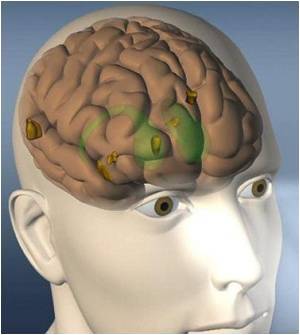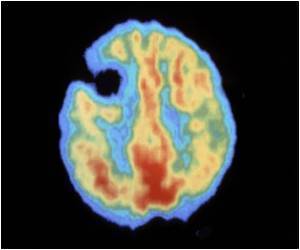A new diagnostic imaging technique has been developed by researchers to evaluate patients for parkinsonian syndromes.

Parkinson's disease is a neurodegenerative disorder that afflicts nearly 1.5 million Americans, with an additional 50,000 to 60,000 new cases identified each year. People with Parkinson's lack dopamine in the brain, which leads to tremor, slowness of movement, muscle stiffness and balance problems. Clinical examinations, particularly early in the disease when symptoms are slight, can be inconclusive or lead to misdiagnosis of another movement disorder, such as essential tremor, which share similar symptoms to Parkinson's, but require different treatment.
Developed by GE Healthcare, DaTscan is a substance used to detect the presence of dopamine transporters (DaT) in the brain. A patient is injected with the contrast agent and then undergoes a single-photon emission computed tomography (SPECT) scan. The test captures detailed pictures of the brain's dopamine system and can provide visual evidence of the presence of dopamine transporters. Scans of patients with Parkinson's disease or another parkinsonian syndrome will show very low dopamine levels. A SPECT scan examines brain function, rather than structure, and can show change in the brain's chemistry.
"In Parkinson's patients the brain's anatomy remains largely normal, unlike other conditions such as stroke, where damage to the brain is visible," explained Simuni, who is also an associate professor of neurology at Northwestern University Feinberg School of Medicine. "DaTscan attaches to dopamine neurons which illuminate on the SPECT scan; the more light areas that exist, the more healthy dopamine brain cells remain. If the areas of the brain that should show dopamine remain dark, it may indicate the patient has some type of parkinsonian syndrome."
An accurate clinical diagnosis for patients with neurodegenerative movement disorders, such as Parkinson's, can take up to six years. While symptoms often mimic Parkinson's, other movement disorders, such as essential tremor, occur in different areas of the brain and do not involve the dopamine system.
"Even though they may appear similar, other movement disorders require different management. DaTscan allows us to confirm our diagnosis earlier and start the correct course of treatment sooner," said Simuni. "We are hopeful that this will lead to improved quality of life for these patients with better long term outcomes, as well as protection from unnecessary treatments initiated because of misdiagnosis."
Advertisement
"Currently, we are not able to say with certainty that those enrolled in Parkinson's studies have the disease," said Simuni. "With the addition of DaTscan, we can be much more confident in the status of research subjects in both the control and experimental groups. By having a better understanding of these populations, we should be able to have clearer outcomes and hopefully that will translate sooner into treatments and eventually a cure."
Source-Eurekalert










